
I recently scaled a B2B SaaS company from 0 to 23k organic traffic per month in 6 months. Before you say, "who cares about the traffic? We care only about signups," let me tell you that the company is getting 700+ leads every month.
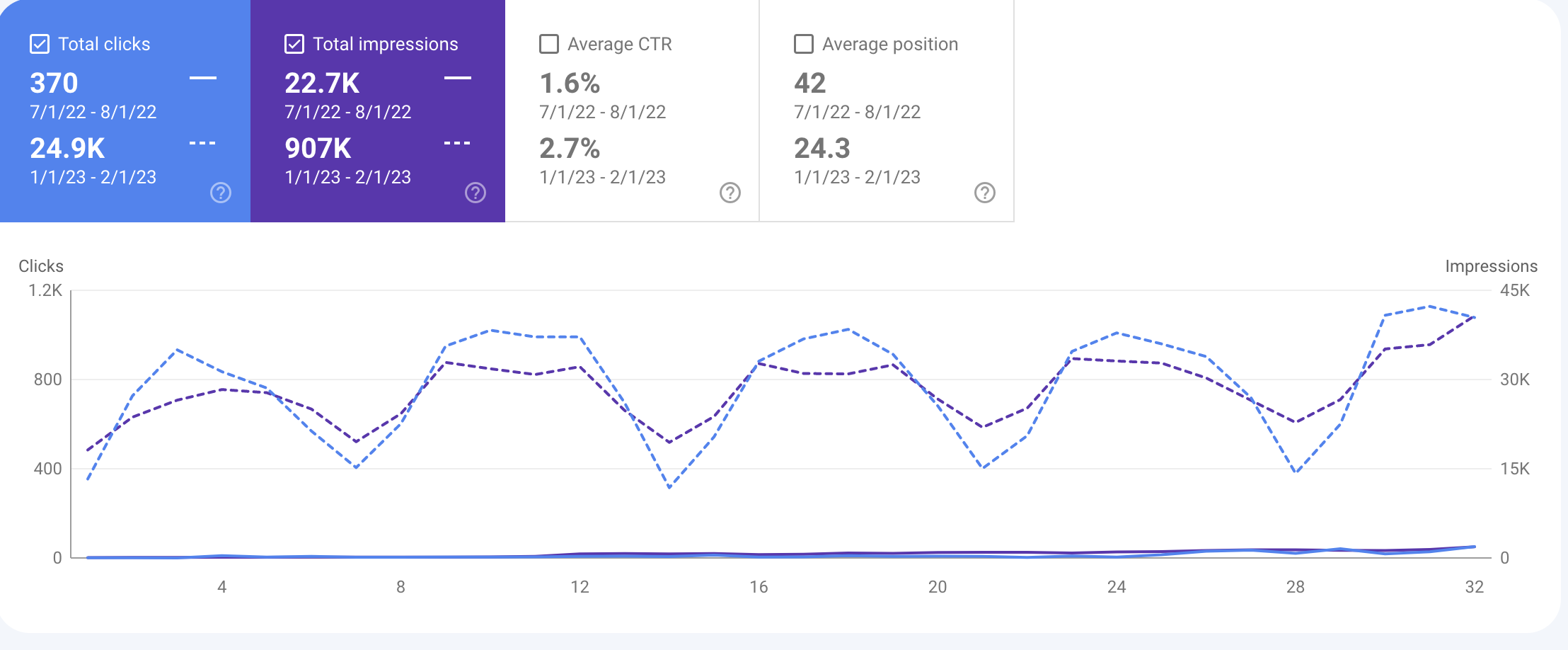
In this article, I am going to talk about 3 types of content that helped me to drive signups as soon as 3 months.
🔥 How should you build your content marketing funnel?
🔥 What are the 3 types of content you should cover to drive signups
🔥 Practical examples of revenue-focused content
Everyone uses a different marketing funnel, but I think there is no need to overcomplicate things. When I am building a content strategy to drive leads as soon as I can, I use the funnel below.
Small note: I know that there is a step before problem awareness, but because I want to create a strategy that will give the leads as soon as possible, I am only focusing on problem awareness, solution awareness, product awareness, and most aware.
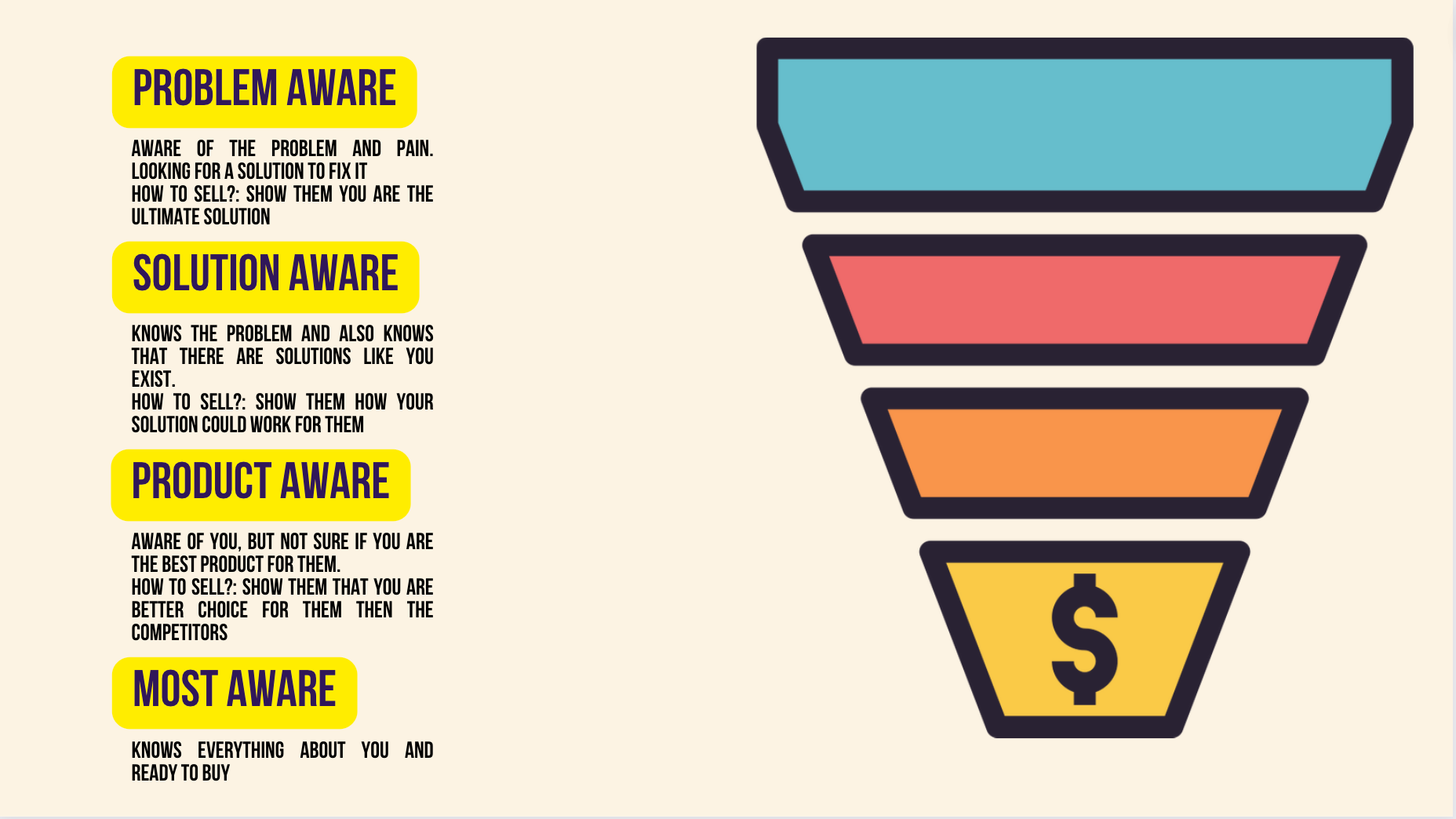
A practical example to explain the funnel better:
Let's say that there is a marketer called John, and he is suffering from back pain because he has been sitting in front of his computer for 15 hours a day. For the sake of this example, you also happen to own a Yoga studio helping people to cure back pain.

Problem awareness: John tried to get up from his chair, and he felt severe pain in his back.
Solution aware: John wants to cure his back pain, so he goes back to his computer (where it all started) and searches for a solution to his back pain. He finds out that yoga is great for his back pain, and he needs to go to a studio. At this stage, he knows his problems and solutions out there.
Product aware: John did a search and found a couple of yoga studios, including yours as well. He is not sure what is the best Yoga studio for him at the moment, but he is considering his options.
Most Aware: John spent hours of research and decided that your yoga studio was the best for him. He didn't signup for a session yet, but he is about to do so
I used the funnel above to create my content strategy, but I did a small tweak👇
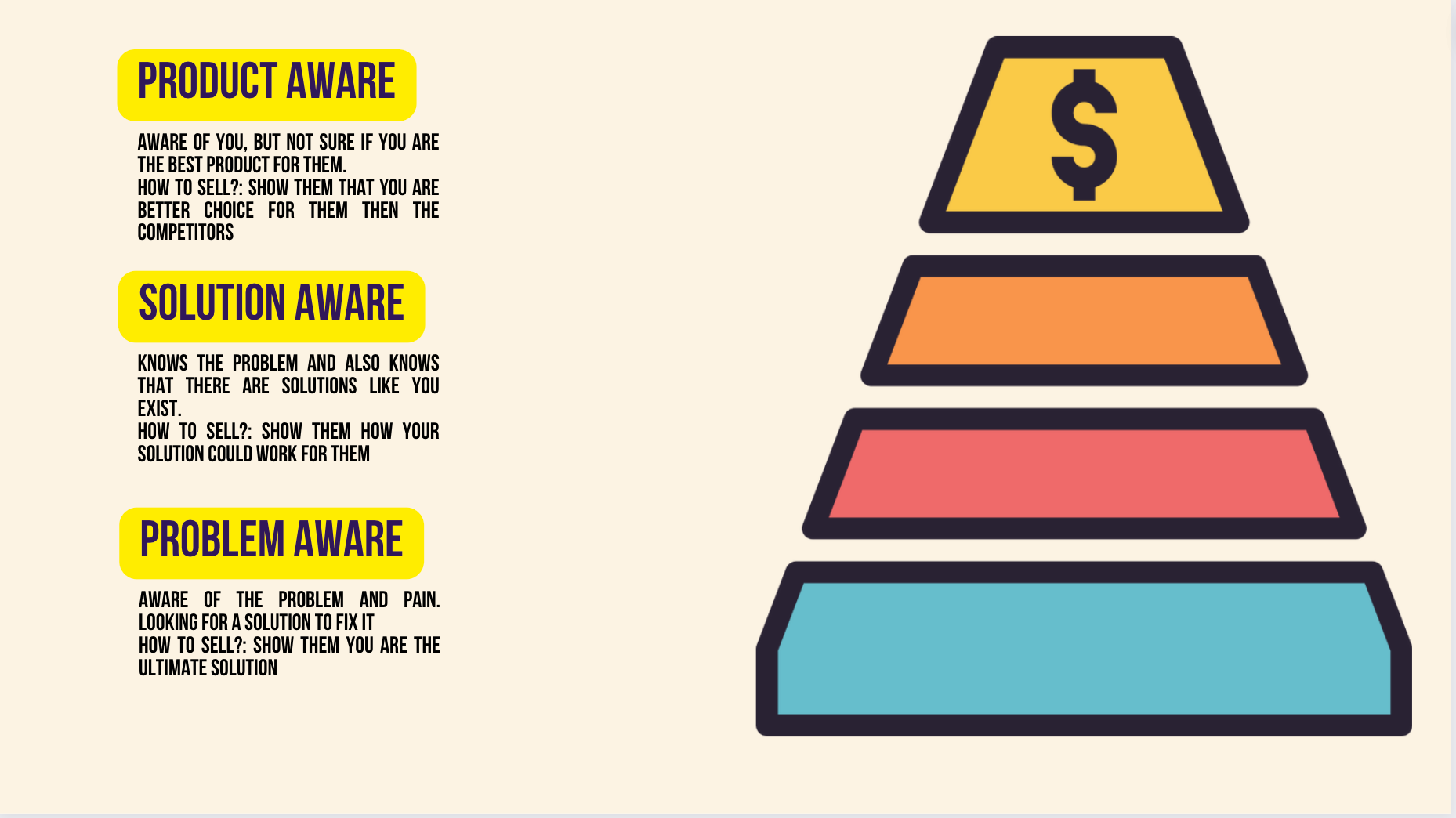
You might be asking why did I flip the funnel before creating my content strategy?
The reason is that if you want to get sign-ups as soon as possible, you need to start targeting people who are looking to buy a solution like yours. On paper, it looks easy to take someone from Problem aware stage to the most aware stage. In reality, it's not easy, and it takes time, especially if you are in B2B SaaS. Because of this, we are starting to build the funnel from the bottom.
If you want more sign-ups, you should have content focusing on the following:
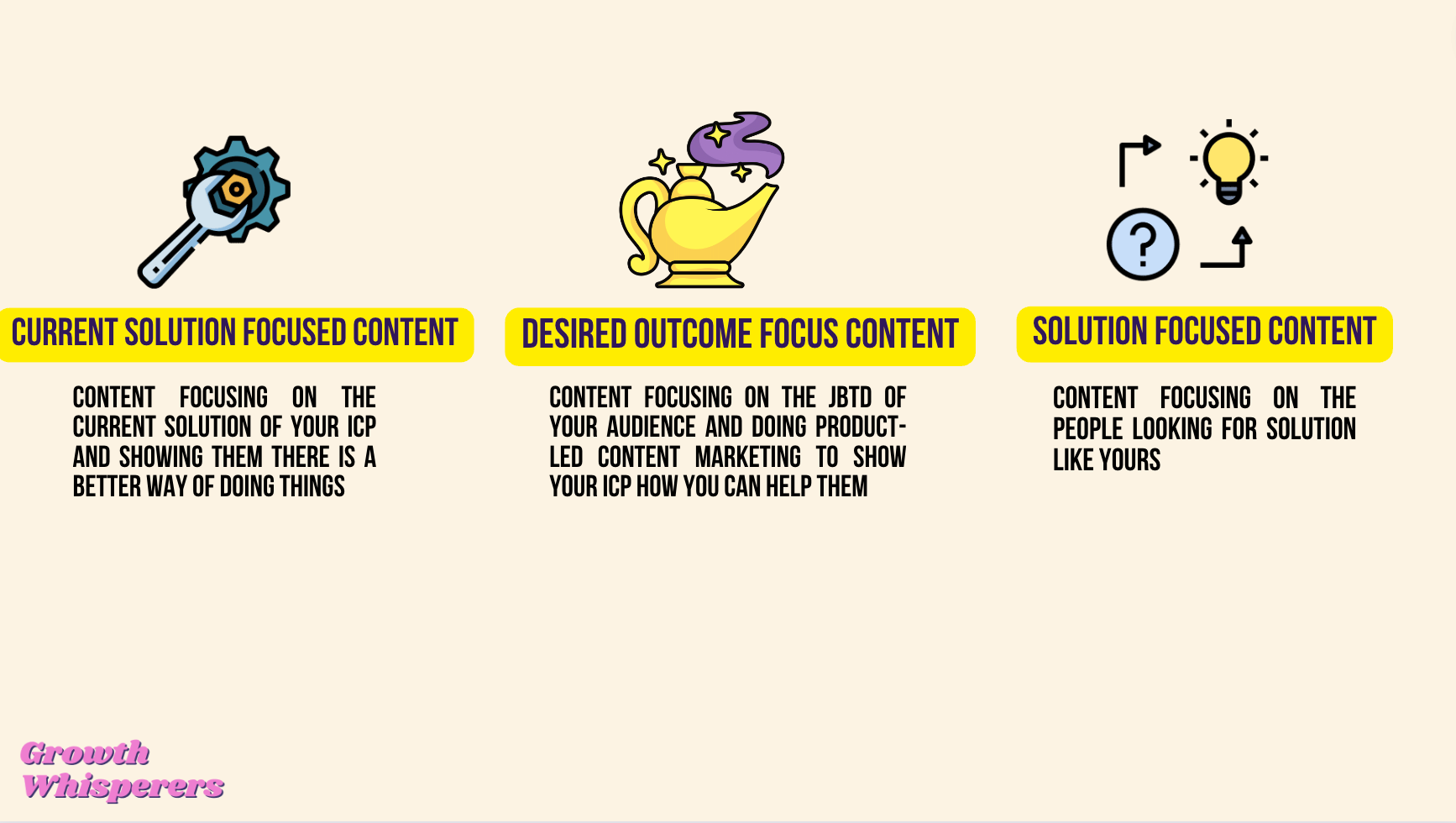
I call this current solution-focused content because you are writing about the current solutions your ICP is using to get things done.

When I say current solution, I am not talking about the direct competitors. I am talking about other alternate ways. This might not apply to all companies, but most B2B SaaS companies are still competing with sheets and excel.
Example:
Let's say that you are a B2B SaaS company helping people to create content calendars with your tool. You did your customer research and found out that many of your users were using Google Sheets to create a content calendar before even being aware that there are tools out there that could help them to do this better.

How to get started with it:
1. Identify how your users used to solve the problem without using a tool like yours
2. Google the current solution of your customer to see if there are articles ranking on it
3. Take the first results from SERPs, put them to "site explorer" in Ahrefs, and check what keywords they are ranking for (this will help you to identify the main kw you should go for)
4. Write content on the current solution of your users. You should make this article "how to" style.
5. Write about "how to achieve the goal with a current solution" make sure that you are serving the search intent
6. Mention the drawbacks of the current method and present your product as a better solution
7. Don't shy away from educating your users on how they can solve the problem with your product
Desired outcome-focused content is all about understanding why your ICP uses your tool. What are they trying to solve or achieve?
You need to understand that people don't use tools because they love using tools. People use tools because they want the outcome of using that tools. The image below summarizes this perfectly:
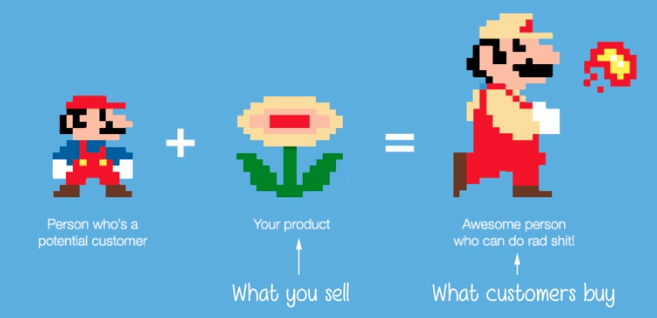
With the desired outcome-focused content, we write about how your prospects can achieve their desired outcome with your tool.
The great thing about desired outcome content is you are targeting people who are trying to solve the problem you are solving, but they have no idea that a solution like you already exists. This works great, especially if you are in a not mature market, and people don't know the name of the solution they are looking for, but they are searching for their desired outcome or JBTD.
Example:
Let's say that you are a new market and you have a tool that is helping people to reduce churn. There are not many software out there solving this problem, so there is no established category yet. There are not many people searching for "software to reduce churn" or "churn management software"
On the other hand, a lot of people desire to reduce churn, and they are actively looking for a solution to their problem. In this case, people search "how to reduce churn", "how to reduce churn for B2B SaaS," etc..
What you need to do is write content about the desired outcome of your ICP. In this case, it is "reducing churn" and showing your readers how your product can help them to achieve their desired outcome.

How to get started with it:
As the name suggests, solution-focused content targets people who are at the "solution-aware" stage in the funnel. At this stage, people know that there are solutions like your tool are already out there, but they are looking for the best one for themselves.
Example:
Let's say that you are a SaaS selling content calendar software. Your category is mature enough. You have few competitors, and people know that there is a category out there called "content calendar software". You need to make sure that people will find you when they search for anything related to "content calendar software" or your competitors.

Here are the most common modifiers for this type of search query:
How to get started with it: